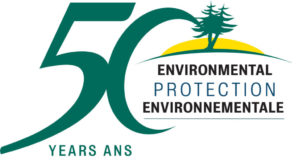Approved by the provincial government in 2015, the proposed Sisson mine still needs to meet 40 conditions before moving forward

While the federal government recently approved a proposal by the Sisson Partnership to dump mine waste into two fish-bearing brooks that feed the Nashwaak River, the Conservation Council’s Lois Corbett isn’t holding back how she feels about the decision.
“The project owners can crow and say that it’s a significant milestone,” our executive director told CBC recently, “but there’s a whole heck of a lot more hills that have to be overcome before we’ll see a shovel in the ground.”
Approved by the provincial government in 2015, the proposed Sisson mine still needs to meet 40 conditions before moving forward.
The mine, owned by Northcliff Resources and Todd Minerals, is located about 30 kilometres from Stanley and 60 km northwest from Fredericton.
The fish-bearing brooks that will be destroyed as part of the proposed tailings dam are habitat for Atlantic salmon and the Americal eel, both endangered species.
Corbett told CBC that she wasn’t surprised that Northcliff’s proposal was approved.
“This is an economic depressed area, so this is an easy place to do a foolio on the government and … decision-makers. And I think that we need to end that era being taken advantage of,” she said.
“It’s unfortunate but the economic arguments in favour of large mining projects almost always outweigh the environmental damages that projects like the Sisson Mine will do.”
Still, First Nations and environmental groups managed to pressure the federal government to require the company to increase its fish habitat compensation plan from the $83,000 initially proposed to $954,000, the article states.

“That got jacked up to almost a million dollars, so it is better now,” Corbett said. “But from an ecological perspective, what the compensation package is doing is actually taking down one culvert and one dam, and restoring alewife in the Nashwaak, which is an admirable goal but it is not replacing Atlantic salmon nor American eel.
“So that it’s kind of a switcheroo.”
The Conservation Council of New Brunswick has been a vocal opponent to the Sisson Mine Project as it is currently designed, and we are on the record pointing out its flaws — including inadequate tailings storage and the impact on Atlantic salmon, brook trout, slimy sculpin, and American eel in the lower Wolastoq (St. John River) watershed. To hold back mine waste, the owners say they would need to build a tailings dam twice the height and 16-times the length of the Mactaquac dam.
“So that’s one heck of a big dam,” Corbett said.
Recommended links:
- Conservation Council comments on Sisson Mine project environmental assessment report
- What the Mount Polley tailings disaster has to teach us to protect the Nashwaak from the Sisson mine
- Guest blog: A plea to the people of New Brunswick
- Risky business: the company behind the Sisson mine project
- Find more of our posts about the proposed Sisson Mine


